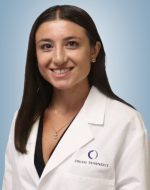Orthopaedic Traumatology
What is Orthopaedic Traumatology? Orthopaedic Traumatology refers to the orthopaedic care of patients with difficult or complex fractures, non-unions (the failure of a fractured bone to heal normally) and mal-unions (incomplete healing or healing in a bad position). Orthopaedic trauma is a severe injury to part of the musculoskeletal system such as a bone, joint or ligament. Leading causes of orthopaedic trauma include vehicular and industrial accidents, slips, falls or sports injuries.
OUR APPROACH
People of all ages can be affected by a traumatic injury. These injuries can be complex to treat and may involve multiple parts of the body. Our surgeons, who are specially trained in orthopaedic trauma, can quickly and accurately establish a diagnosis and initiate treatment to maximize function.
In traumatic situations, decisions are made quickly. Surgeons rely on their knowledge, training, and experience to choose the appropriate course of treatment. When your bones do not heal as expected, you can be assured our surgeons have experience in handling your potentially complex and sometimes life-threatening situation.
IN AN EMERGENCY
Concord Orthopaedic trauma surgeons receive emergency patients at the Concord Hospital Jim & Marianne Cook Emergency Department which is an American College of Surgeons certified Level III Trauma Center 24 hours a day, 365 days a year. Although most traumatic injuries are non-fatal or life-threatening, they have the potential to create long-term and permanent disability. The quicker a diagnosis and a recovery treatment plan can be implemented, the faster a patient can recover. Orthopaedic trauma management differs from treatment of less complicated or isolated fractures as surgery is often required. Preventative actions can minimize trauma injuries incurred as a result of slips, falls or sports injuries.
CONDITIONS:
Patients with acute damage to the musculoskeletal system seek treatment from Concord Orthopaedics trauma surgeons for a wide range of difficult orthopaedic conditions. These include:
- Complex peri-articular (surrounding the joint) fractures
- Pelvis and acetabluar fractures (Acetabular is the part of the pelvis that forms the hip joint. Acetabular trauma is damage to the socket of the hip joint but is different than a hip fracture.)
- Post-traumatic deformity (This is a change in musculoskeletal shape or form after a trauma, injury or illness.)
- Fracture non-unions and mal-unions (Non-unions refer to the failure of a fractured bone to heal normally and mal-unions are bones that heal in a bad position.)
- Infections (Bacterial infections are a common source of musculoskeletal abnormalities.)
- Open fractures (Most of these severe injuries to the bone are emergencies. If the fracture penetrates skin, there is high risk of infection.)
- Fragility fractures (These fractures are due to osteoporosis and pathological fractures as a result of abnormalities of the bone, e.g. bone softening or cancer.)
TREATMENTS & PROCEDURES:
Our trauma team treats injuries to the bones, joints, spine, arms, and legs, as well as their associated nerves, muscles, and other soft tissues. Our surgeons use the latest techniques to repair shattered bones. These include:
- Vascularized bone transplants: In this surgery, crushed bone is replaced with bone from the fibula, one of the bones of the lower leg
- Minimally invasive approaches: Smaller incisions mean that more surrounding tissue is preserved, which increases the amount of nourishing blood that can reach the bone and aid recovery
We see in-patient trauma patients at The Orthopaedic Institute Concord Hospital.
SAFETY & WELLNESS:
Simple safety reminders can raise your awareness and increase the likelihood of a full recovery should you experience a traumatic injury. Safety reminders cover everything from auto & boat safety, home & fire safety and falls prevention.
Make auto safety a priority, for yourself and your passengers.
- Use properly installed child safety seats.
- Always wear your seatbelt.
- Maintain regular car tune-ups.
- Do not drive and text and consider using a hands-free mobile device.
- Whether you’re driving a car or enjoying time on a lake in your boat, never drink and drive. Alcohol impairs your judgment, vision, balance and coordination.
- For those who boat in the summer, consider taking a boat safety class and wear life jackets.
- In your car or at home, keep a well-stocked first aid kit. A well-stocked first aid kit can not only assist you in dealing with minor injuries, but can stabilize major ones, until you can receive proper medical care.
At home, practice safety.
- Make sure there are working smoke detectors in key areas.
- A good rule of thumb is to place a smoke detector in each sleeping room with additional placements in the hallways outside the sleeping areas as well as at the bottom and top of stairwells.
- Supplement smoke detectors with fire extinguishers. There should be one for each floor of your home and one close to the kitchen.
- Establish fire exit plans and routes, especially with young children and practice them on occasion.
- Keep your cell phone charged so that in an emergency you can contact 911.
ORTHOPAEDIC TRAUMA STATISTICS
- Each year trauma accounts for 42 million emergency department visits and 2 million hospital admissions across the nation. (Source: CDC, updated April 2012)
- #1 for age group 1-44, or 47% of all deaths in this age range; #3 leading cause of death overall, across all age groups (Source; CDD, updated April 2012)
- The financial cost of injuries is estimated at more than $224 billion annually. (Source: State of New Hampshire Trauma System Plan 2010)











